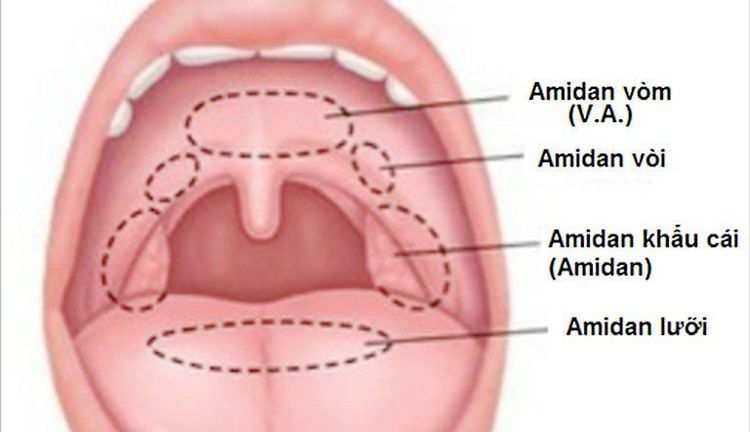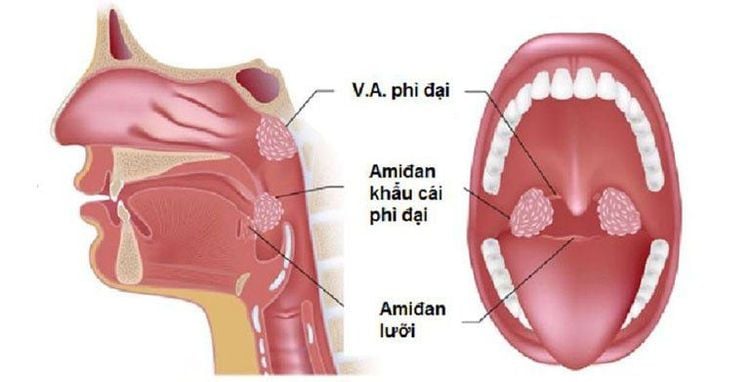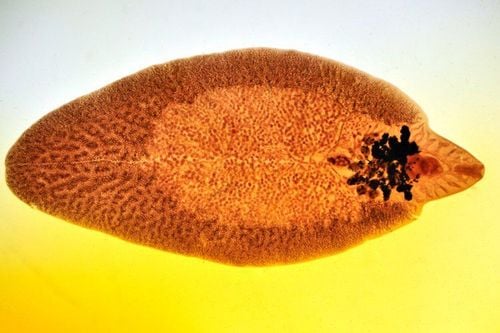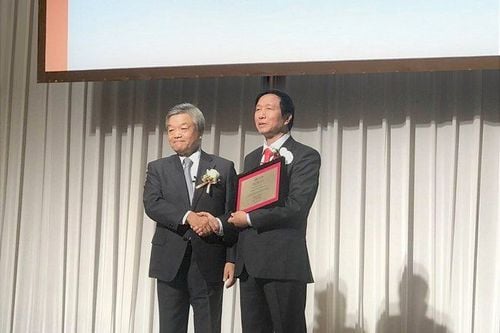This is an automatically translated article.
The article was professionally consulted by Specialist Doctor of Otolaryngology - Department of Medical Examination and Internal Medicine - Vinmec Hai Phong International Hospital.
The function of the waldayer lymphatic ring plays a very important role, helping to destroy harmful factors that invade the body such as viruses, bacteria, fungi, ... thereby effectively preventing upper respiratory infections. .
1. What is a waldayer lymphatic ring?
Under the lining of the pharynx, there are many lymphoid organizations, in some locations, these organizations are concentrated in large groups called tonsils. The tonsils located around the pharynx form a closed ring called the waldayer lymphatic ring. The waldayer lymphatic ring is formed during pregnancy. After the child is born, exposed to antigens in the environment, the tonsils will gradually increase in size and volume until about 7-10 years old, then gradually decrease until puberty.
The ring has 6 tonsils including:
Dome tonsils (also known as VA- Végétation Adénoides): Consists of 1 block, located on the roof and back wall of the nasopharynx. Faucet tonsils: Consists of 2 masses on the right and left sides, located around the eustachian tube hole. The tonsils of the pharynx are composed of 2 masses located on the right and left sides of the pharynx wall, in the tonsil fossa. Tongue tongue: Consists of a mass located at the base of the tongue. The general structure of the tonsils consists of 3 layers from the outside to the inside, respectively:
Coating epithelium: Is the epithelial layer located above the surface, has the function of protecting and eliminating harmful agents attached to the surface of the tonsils. . Connective tissue: This is a thin layer just below the covering epithelium, which has many blood vessels that help nourish the tonsils. Lymph nodes: The innermost layer and also the most important part of the tonsils. Lymph nodes secrete Immunoglobulins, which are antibodies that are able to fight pathogens that invade the body.

2. Structure of the waldayer lymphatic ring
2.1. The tonsils of the arch (V.A)
V.A are formed from the 3rd to the 7th month of pregnancy. The structure is a triangular lymphatic tissue about 2cm thick, without a sheath like the palatine tonsils, with many fissures anterior and posterior dividing the V.A into many zones. V.A will develop from before birth to 8-10 years old to create immunity against viruses, bacteria, allergens and irritants in food and air. After that, V.A gradually atrophied, after the age of 15, V.A almost completely disappeared, the palate became smooth.
2.2. The palatine tonsils are the largest tonsils in the waldayer lymphatic ring. The structure consists of two oval pink blocks located on both sides of the throat wall, different in size depending on age. The surface of the palatine tonsils consists of many deep cavities, covered above by a layer of epithelium. A tongue depressor and an endoscope can be used to view the palatine tonsils.
2.3. Proboscis and lingual tonsils
Proboscis and lingual tonsils have few lymphocytes, so they are less noticeable in the waldayer lymphatic ring. The tonsils are divided into two parts, divided equally on the right and left sides, around the eustachian tube, below the Eustachian tube. Tongue tonsils consist of a mass located at the base of the tongue.

3. Function of the waldayer lymphatic ring
Although these organs are small in size, the function of the waldayer lymphatic ring is extremely important. The tonsils with the surface are folded into many folds, so the contact area is very large. When coming into contact with harmful foreign objects (antigens) such as viruses, bacteria, and tonsils, it helps the body recognize, create antibodies and destroy harmful factors when they re-enter.
When air is inhaled from the nose, before entering the lungs, the air will come into contact with V.A. Harmful antigens in the air will adhere to the contact surface of V.A. V.A.'s white blood cells will capture and recognize antigens to produce antibodies. These antibodies will be multiplied and carried throughout the body, but concentrated in the nasopharynx, creating local immunity against harmful factors when they re-enter. As such, the tonsils play an extremely important role in preventing infections, especially those in the upper respiratory tract.

To register for examination and treatment at Vinmec International General Hospital, you can contact Vinmec Health System nationwide, or register for an online.













